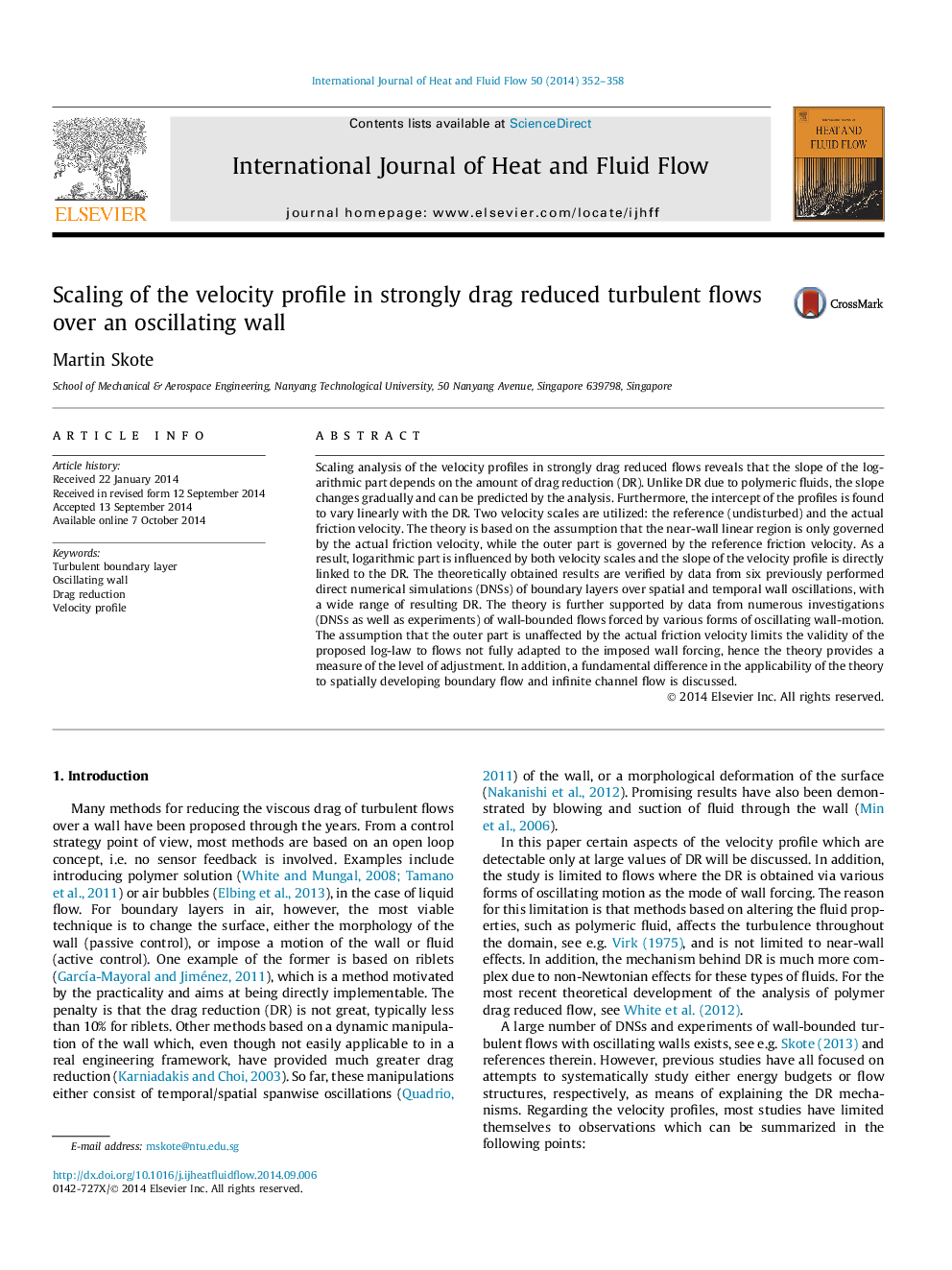| Article ID | Journal | Published Year | Pages | File Type |
|---|---|---|---|---|
| 7053633 | International Journal of Heat and Fluid Flow | 2014 | 7 Pages |
Abstract
Scaling analysis of the velocity profiles in strongly drag reduced flows reveals that the slope of the logarithmic part depends on the amount of drag reduction (DR). Unlike DR due to polymeric fluids, the slope changes gradually and can be predicted by the analysis. Furthermore, the intercept of the profiles is found to vary linearly with the DR. Two velocity scales are utilized: the reference (undisturbed) and the actual friction velocity. The theory is based on the assumption that the near-wall linear region is only governed by the actual friction velocity, while the outer part is governed by the reference friction velocity. As a result, logarithmic part is influenced by both velocity scales and the slope of the velocity profile is directly linked to the DR. The theoretically obtained results are verified by data from six previously performed direct numerical simulations (DNSs) of boundary layers over spatial and temporal wall oscillations, with a wide range of resulting DR. The theory is further supported by data from numerous investigations (DNSs as well as experiments) of wall-bounded flows forced by various forms of oscillating wall-motion. The assumption that the outer part is unaffected by the actual friction velocity limits the validity of the proposed log-law to flows not fully adapted to the imposed wall forcing, hence the theory provides a measure of the level of adjustment. In addition, a fundamental difference in the applicability of the theory to spatially developing boundary flow and infinite channel flow is discussed.
Related Topics
Physical Sciences and Engineering
Chemical Engineering
Fluid Flow and Transfer Processes
Authors
Martin Skote,
